At the end of February, I set out on my first “big” cruise. While I’d been on smaller boat trips, like scuba diving liveaboards or the adventurous Aranui through French Polynesia, I’d never been on a ship with more than about 100 people. But when I learned Norwegian Cruises ran a two-week “safari cruise” in Africa making stops throughout South Africa as well as stops at the remote islands of Madagascar, Réunion, and Mauritius, I figured it sounded like the perfect chance to try out a mainstream, big cruise ship.
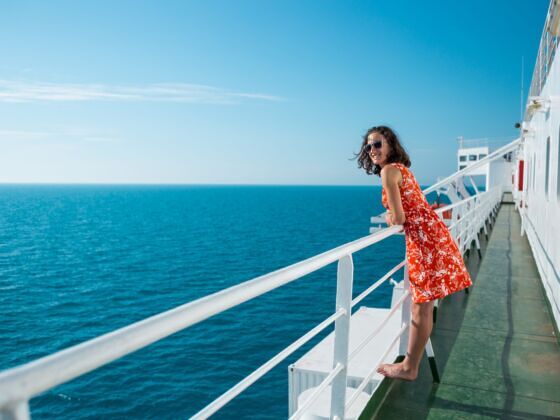

Since it was my first cruise with a commercial cruise line, I didn’t have much to compare it to. But after 10 days on board, I noticed a few things about the cruising experience I really liked, and some things that didn’t float my boat (pun intended). My Norwegian Africa cruise started in Mauritius, and was scheduled to stop in Réunion, Madagascar, and four ports in South Africa, before ending in Cape Town.
The trip started on a rough note, as it was delayed for two days while passengers were quarantined for potential transmissible diseases. Because of the delay, we had to skip the ports in Madagascar, which was disappointing. However, I’m not going to consider that a “bad” thing. It’s no secret that diseases can run rampant on cruise ships, and I’d certainly prefer a cruise line to take things seriously and ensure the ship is safe before boarding 2,000 additional people.
I found my experience on a big cruise ship to be a mixed bag. Overall, it was fun and I’m super-glad I went — I’m not mad about getting to do multiple days of safaris or sip cocktails while floating on the Indian Ocean. But as with most vacations, there were some aspects of the trip that I didn’t love.
While the pros outweighed the cons, they’re helpful considerations to think about if you’re considering booking a trip on a big cruise ship, too.
Something I loved: the ports of call and excursions
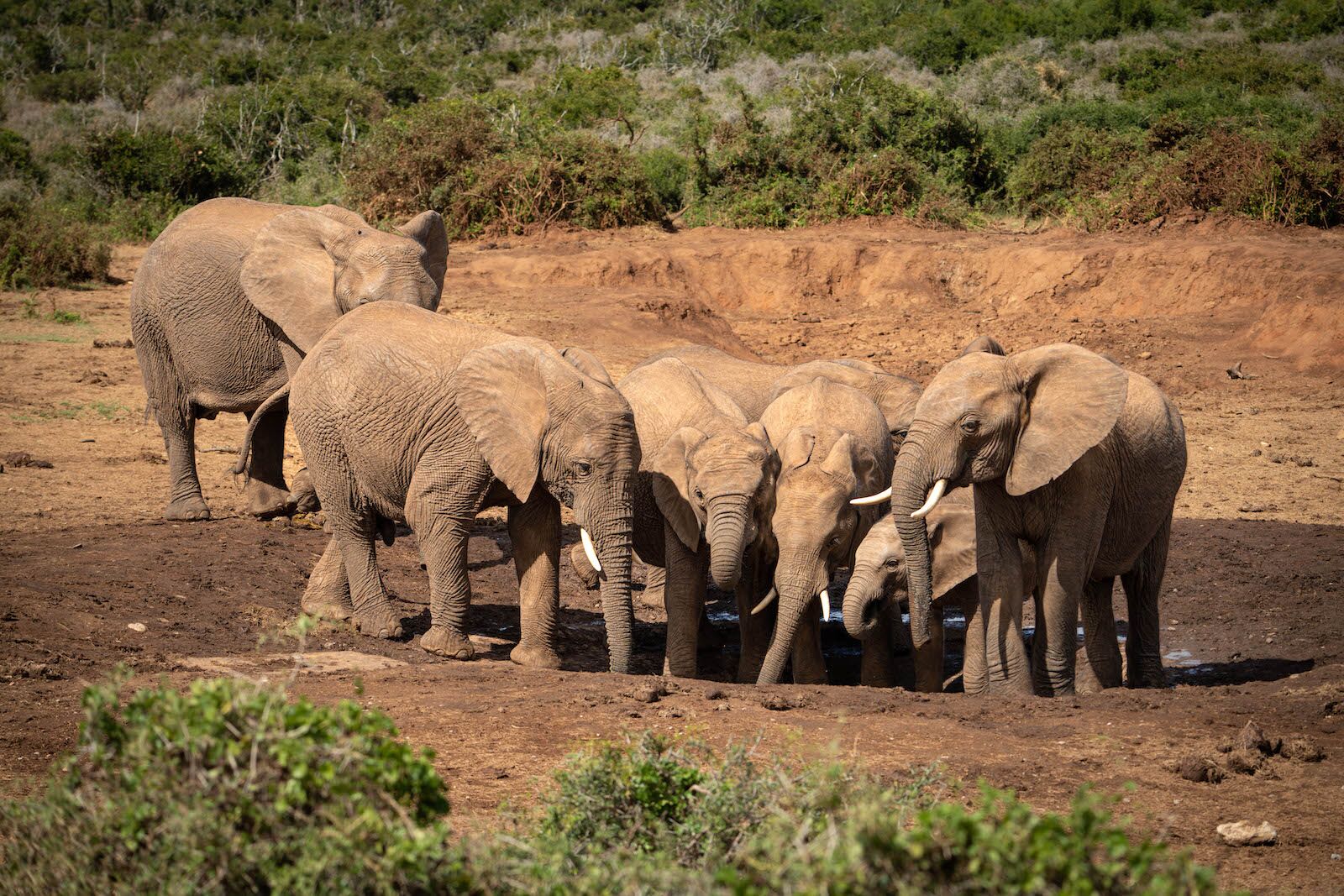
An open-air safari through Addo Elephant National Park was a highlight of our stop in Gqeberha, South Africa. Photo: Suzie Dundas
For me, the main drawn for the Norwegian Africa cruise were the ports. As someone who lives on the US west coast, it’s not easy to get to Madagascar, let alone the small island of Réunion and even smaller island of Mauritius. Though flights to the starting point in Mauritius were pricey, I saved some money by flying back from Cape Town (where the cruise ended), since that’s a major airport with lots of direct international flights.
The whole reason I picked this cruise were the ports, and I planned on doing an activity in all of them. I booked one cruise excursion through a local safari operator, and the rest through Norwegian. And in Réunion, I just got a taxi and explored on my own.
All of my excursions were great, which makes sense: Norwegian vets all the tour companies to make sure they meet Western safety and quality standards. They were a little pricier than I would have liked ($179 to $499), and for a few, the process of meeting up in the morning was a little hectic. For example, on one of my safari excursions, they had about 400 to 500 people meeting up in the theater a good hour before we were supposed to leave. Eventually, they distributed numbered stickers, which we later learned were your bus assignments for the excursion. But they didn’t give us instructions on what the stickers meant while handing them out row-by-row. So if you weren’t sitting next to your friends in the theater at the beginning of the day, you’d likely be separated from the for the entire trip.
But aside from smaller details like that, most everything moved smoothly. We never waited to get on or off the ship, and the various guides were excellent. For me, the on-land adventures and destinations were by far the most important detail of the trip — after all, why else would you fly so far for a cruise if you only care about the boat? So the excursions alone, both through the ship and unofficial, were probably enough to sell me on doing another big-ship cruise.
Something I disliked: the WiFi
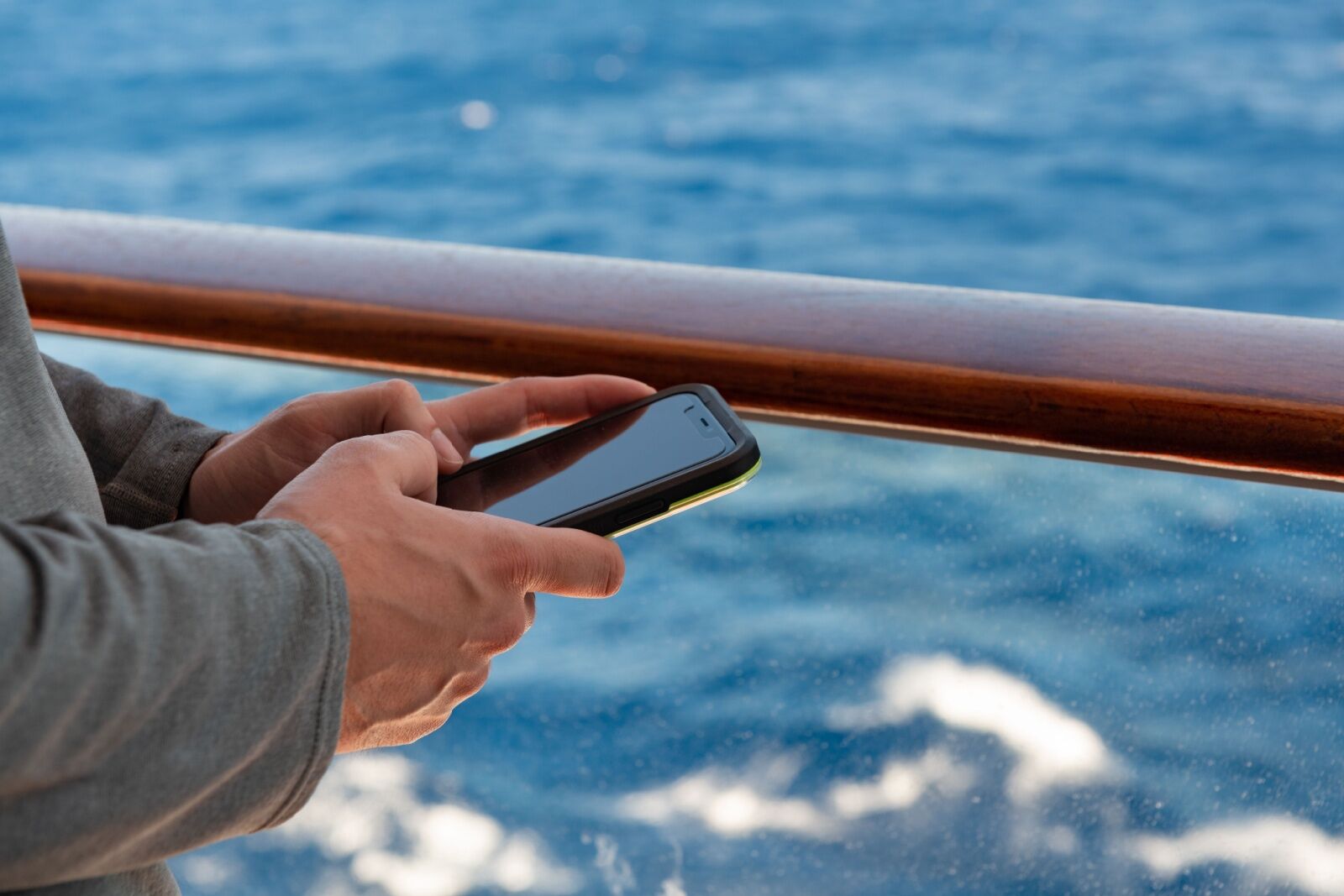
Photo: CLS Digital Arts /Shutterstock
My Norwegian Africa cruise said front and center on the website that it had WiFi on board, but in reality, it hardly worked. I wish I could say it was just slow or basic, but really, it was useless. The only time I could even load Gmail was before 7 AM when most people were still asleep. And on top of that, it cost about $400 per device for the 10-day sailing. It was supposed to be fast enough to stream (in fact, Norwegian’s Q&A page says “Yes, you can access streaming with our Premium Wi-Fi plans,) but considering I literally couldn’t open the most basic of websites, I would say that statement is incorrect.
However: Norwegian claims they are updating all their ships with Starlink internet, which is generally reliable, wildly available, and fast enough. The ship I was on (Norwegian Dawn) is getting Starlink added during an April 2024 refurb, so I advise checking to see what internet provider your ship is using. If it’s Starlink, you should be okay. If it’s not, you may want to seriously look into reviews that mention Wifi, if having internet access is important to you.
Something I liked: the entertainment
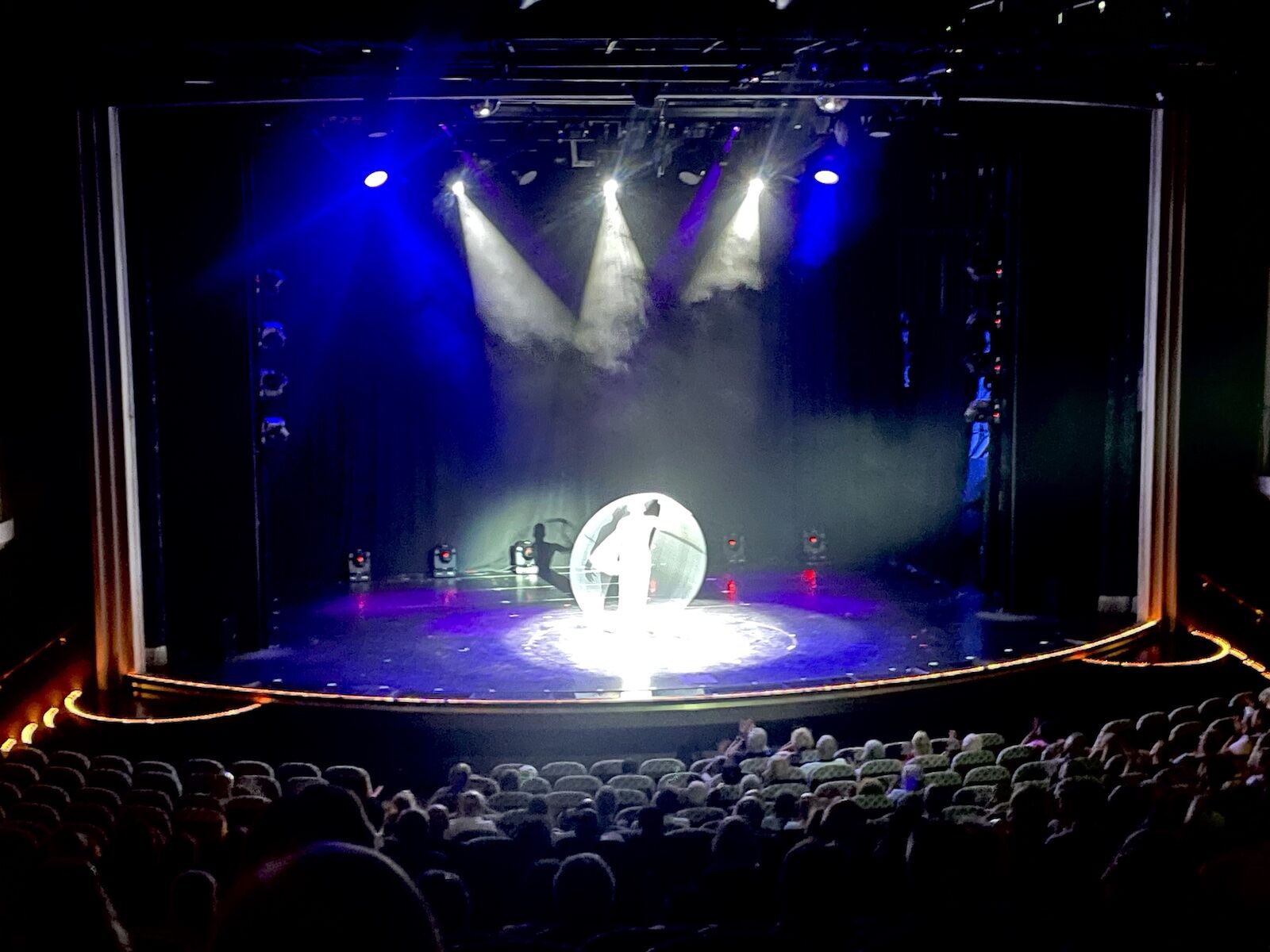
Photo: Suzie Dundas
Since this was my first big cruise, I was unaware that major cruise lines have full theaters with shows and entertainment. And truly, it was quite entertaining — both for the pure performance value, and the cheesy novelty of seeing a David Copperfield-style magic show at sea.
My favorite shows were the highly skilled violinist leading a full band in pop, rock, and well-known classics (with a bit of showmanship thrown in for good measure); and the aerialist/gymnast duo who hung from silks, swung from hanging hoops, and spun around in a human-sized loop called a lyr wheel — exceptionally impressive, when the ship is rocking back and forth. Some of the shows I found a bit cheesy, but that’s also part of the appeal, especially when you remember you’re floating in the middle of the Indian Ocean watching an illusionist make his partner “float,” surrounded by a bunch of drunk grandparents looking to party.
On my Norwegian African cruise, there was a show every night, including musical reviews, a stand-up comedian, a Cirque-du-Soleil-style show, and more. Shows were offered two times a night, and there was never a time when we couldn’t find a seat, despite the cruise being sold out. There were also frequent live bands in the various lounges, as well as on the pool deck each afternoon.
Something I disliked: the reliance on one-time-use material

IMO: Let people opt out of having every document printed and delivered to their room every day, especially since it’s all on the Norwegian app. Photo: Suzie Dundas
Every single day, we had multiple documents printed and left in our room: the daily schedule of events (despite it being free on the app), coupons for specials at the spa, promotions for art auctions, and more. There was no way to opt out of any of these.
There also weren’t any water bottle refill stations on board, and the sign in the bathrooms that was supposed to make people think twice about throwing their towels on the floor almost read as if it was discouraging reuse.
Of course, ultimately, what really makes a difference are the grand-scale environmental moves a cruise line makes, like whether it uses biofuels, whether it recycles, and how much it actually tries to keep chemicals and other waste out of the oceans in transit. That’s a complicated question to answer, but it does seem like there were small moves the ships could make to at least make guests start thinking about the impact of their travels. Cruising isn’t known for being environmentally friendly, but Norwegian seems to be among the more sustainable of the major cruise lines, per a Friends of the Earth ranking. I’d just like to see it go a little further.
Something I liked: the Thermal Suite

The Thermal Suite was never crowded, with great views and plenty of space to relax. Photo: Suzie Dundas
I’m not much of a spa-goer, and I can count on one hand how many times I’ve had a facial treatment. But I actually found the Norwegian Thermal Suite concept, something available in some capacity on every Norwegian cruise, to be a fantastic place to escape the crowds and well worth the reasonable price.
The Thermal Spa area has men’s and women’s lounges with glass walls, comfortable couches, and as far as I can tell, no crowds. There were also two hot tubs, and indoor pool, and a line of heated spa loungers that also looked out on to the open ocean. With that comes men’s and women’s locker rooms, each with a sauna, steam room, and showers. It was a great place to relax, and I spent about an hour each day in the lounge either trying to work, or just relaxing and reading a book while watching the ocean go by. The cost of an all-access pass to the Thermal Spa was only about $200 for the entirety of my two-week cruise, and something I’d highly recommend to anyone looking for a more peaceful area on board with plenty of personal space.
One more note about the spa: it was pricey, but great. My service was excellent and I left feeling refreshed, not sore. They had a large menu that ranged from unique treatments like bamboo-reed massages to acupuncture and skin treatments. If you score a Norwegian “Free at Sea,” deal, consider spending that on-board credit on a Thermal Suite pass.
Something I was indifferent on: the food

Dinner at Le Bistro, the best of several specialty restaurants on board. Photo: Suzie Dundas
I feel kind of bad saying that the food was pretty average, but I suppose that shouldn’t come as a surprise. Preparing food for 2,000 people for 16 hours a day isn’t an easy task, and it’s pretty hard to make anything unbelievably good at that scale — after all, Michelin-starred restaurants are usually on the smaller side.
Some of the restaurants on board were reasonably good. (Shout out to the Norwegian Dawn’s Le Bistro French restaurant, and to the teppanyaki chef performing a one-man comedy show inside the ship’s sushi restaurant.) But otherwise, I’d say it was mostly pretty average. Personally, I didn’t care about this too much, since I didn’t take a safari cruise for the food. If I wanted a food-focused cruise, I would have picked a cruise with a culinary focus, such as a Windstar Cruise with a James Beard Award-winning chef, or an Avalon Waterways Cruise through France.
The food was plentiful, varied, and I didn’t go hungry. But I wouldn’t say it wowed me.
Something I liked: the staff
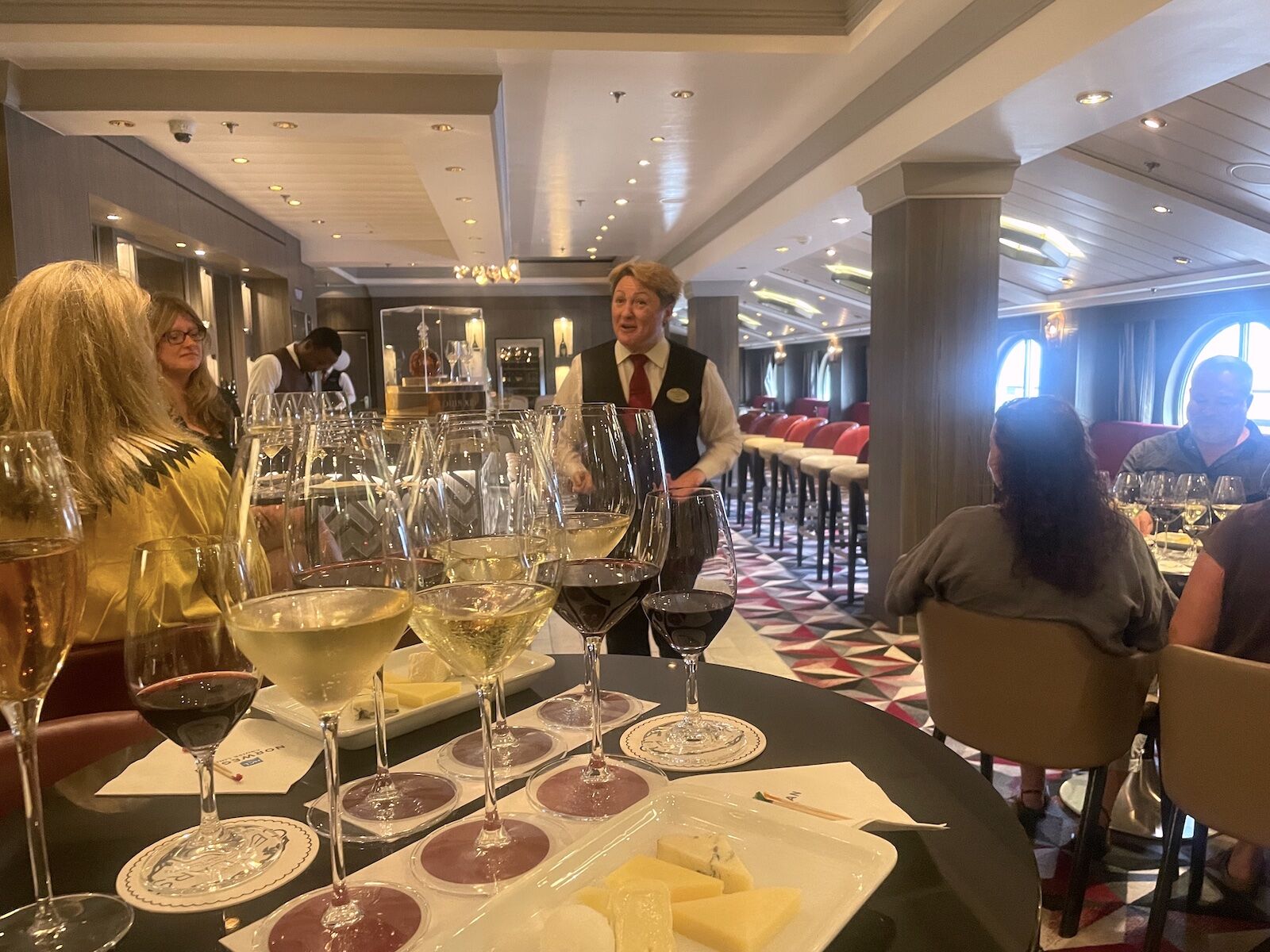
Wine classes with the extremely knowledgable (and funny) Julia were one of my favorite things on board my Norwegian Africa cruise. Photo: Suzie Dundas
On board, it seemed like there were two kinds of employees: young people using it as a chance to travel and make some money while having fun, and more career-focused employees, who are either building a resume in the industry, or working at sea to make extra income to send to their families back home. Both types of employees were fantastic.
Given how much BS employees likely deal with from entitled and impatient guests (and how many hours they work per day), I wouldn’t blame them one bit if they were a little curt or burned out. But that wasn’t the case at all. Our room steward and the baristas at the coffee shop greeted us by name (impressive, with 2,000-plus people on board), and the wine bar’s sommelier was a total hoot who made everyone feel welcome, whether or not they knew the first thing about wine. I also found everyone very chatty and happy to share stories about where they were from and what life was like on board, which was refreshing.
Something I disliked: “Freestyle” cruising
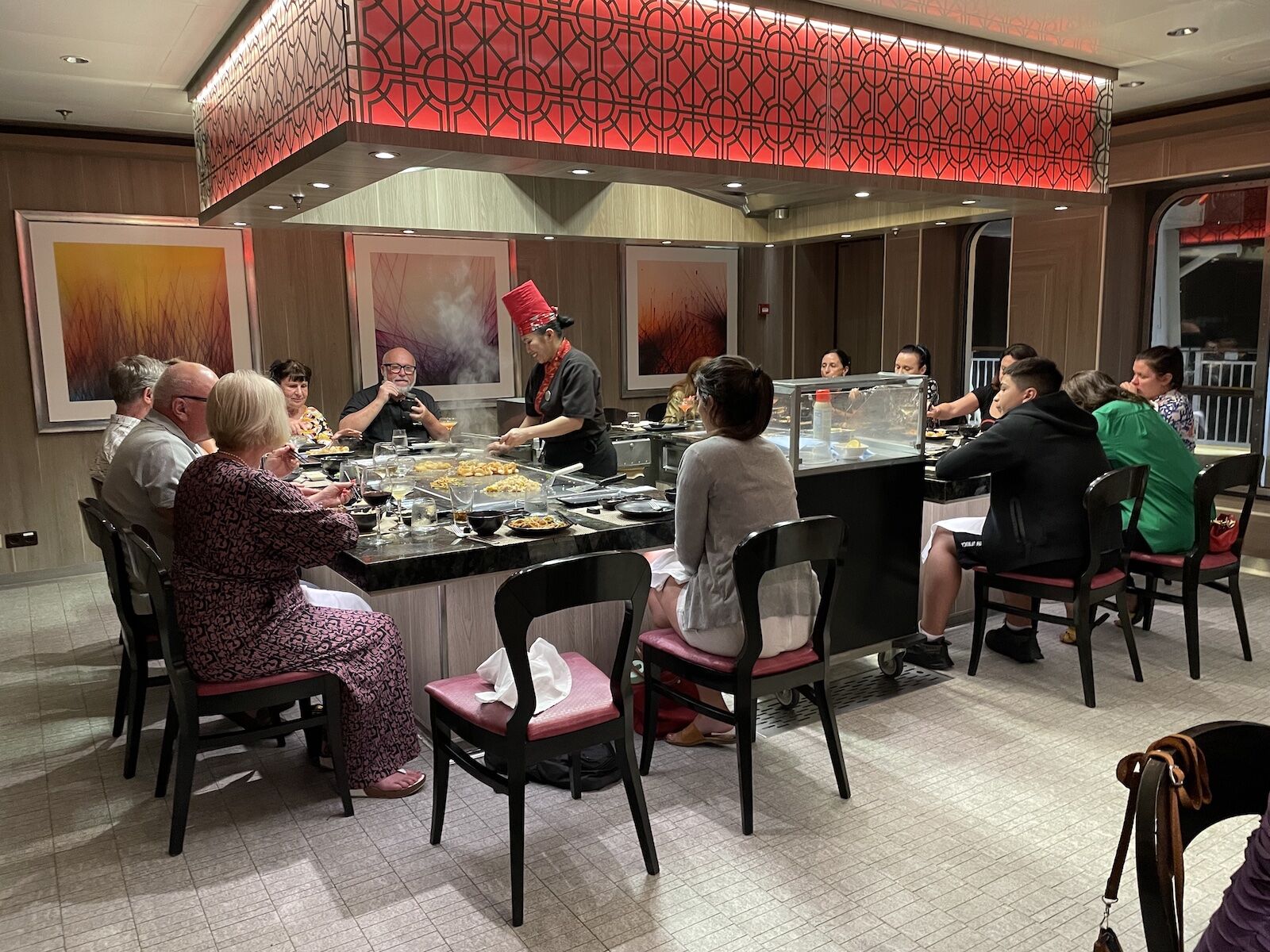
The Norwegian Dawn has a mix of free and premium restaurants, only some of which take reservations. Photo: Suzie Dundas
Norwegian’s hook is that it offers “freestyle cruising.” Supposedly, it’s a more flexible cruising experience. Essentially, it means that you don’t have set dinner times, there are no reservations for shows, there are no formal nights or dress codes, etc. While it’s supposed to be more relaxed, I actually found it to be far more stressful. I’d rather have a set dining time rather than waiting in lines for a table at the no-reservations restaurants, and not have to get to a theater or lounge 20 minutes early to make sure they don’t run out of seats.
We tried to eat at the on-board sushi restaurant twice and were told it was a 90-minute wait, so we ended up disappointingly picking at the ship’s buffet, instead. When I tried to get a table for eight at one of the on-board dining room restaurants, we were told it was an hour wait — only for someone else to be able to get a table for six a different restaurant, forcing our dining group to split up.
You can make reservations at some restaurants on the Norwegian app, but otherwise, you’re at the mercy of one of two options: take your chances waiting in line at dinner time, or go at 4 PM or 9 PM for a chance to snag a table. Overall, the “freestyle cruising” thing may be a bit better on a cruise that isn’t as full, but I found it to be more of a hectic scramble each night than a convenience.
Something I liked: the price
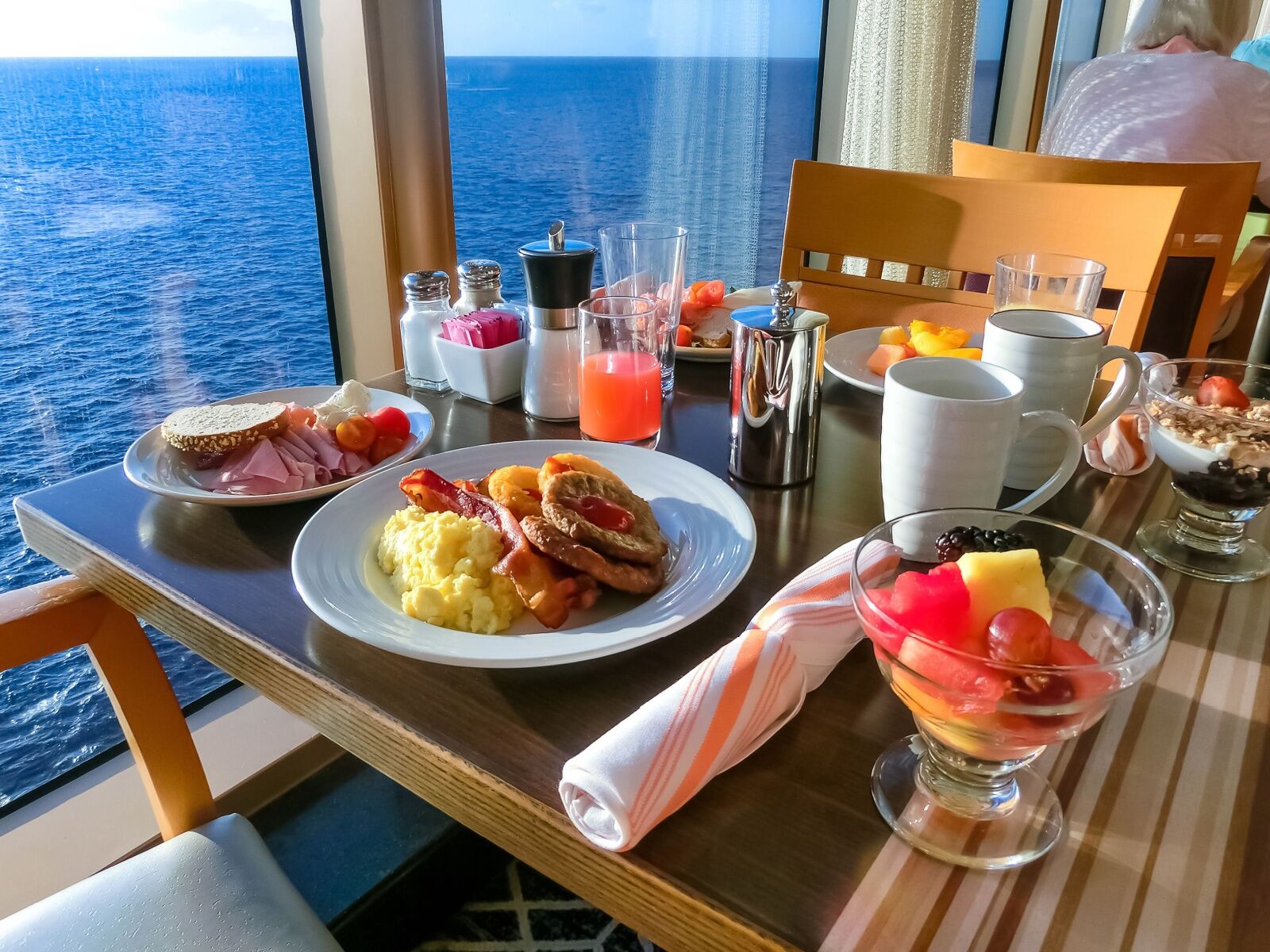
If you’re cool sticking mostly to buffets, a cruise can be a very affordable vacation. Photo: Solarisys/Shutterstock
It may sound like I’m a little jaded on the big cruise thing, but I’m not. While I don’t know if they’re for me, I do know that they’re a wonderful chance for lots of people to affordably and safely explore countries they may never be able to see on their own. And to that end, I applaud the approachable pricing. My Norwegian Africa cruise started at about $1,299 per person for a 12-day cruise — but in the weeks beforehand, I saw it slashed to nearly half that price to encourage last-minute bookings.
Obviously, that’s the base price, and there are extra fees for almost everything — excursions, alcoholic drinks, speciality restaurants, photo packages, WiFi, etc. However, the brand does usually have some pretty good “Free at Sea” deals that include perks like better drink packages and discounts on WiFi. So if you’re cool with sticking to a few primary restaurants and can entertain yourself at the ports, a Norwegian Africa cruise can be a pretty cheap vacation.
Something I disliked: the constant sales pitches

At times, it seemed like the only goal of getting people on the cruise was to sell them another cruise. Photo: Wagner Santos de Almeida/Shutterstock
I love trivia, so when I saw “World Travel Trivia” on the daily calendar, I got there early to get a good table. But it only took about three minutes of trivia to learn how to always get the answer right: just pick whatever answer is a destination Norwegian wants to promote. All 15 questions were followed by a sales pitch and a video of a Norwegian cruise from that destination.
I shouldn’t have been surprised by this, as it makes sense: the base price of a cruise is super-cheap, so once you’re on board, they want you to spend as much as possible — and keep spending it with Norwegian. The name of Norwegian’s sales arm responsible for this isn’t even subtle: it’s called “CruiseNext,” and it’s sole goal is getting you to book your next cruise before you’ve finished the first one.
Nobody was pushy, but it just never stopped: everywhere you went was an advertisement to sell you another cruise. It got to the point where we started joking that they were going to pause the acrobatic stage show for an ad break to announce “you’ll flip for these amazing cruise deals.”
Would I do another big cruise?

Visiting a penguin colony was a major highlight of my days in Cape Town. Photo: Suzie Dundas
I don’t think big ship-cruising will ultimately be for me, but I’d like to do another one. I’m not sure if my experience was par for the course or not, since it was the first one I’d be on. I would certainly not hesitate to go on one if I was traveling with my retired parents, since a big-ship cruise offers the right blend of safety and exploration for older or infrequent travelers. Cruising is also a great way to travel with multiple generations of family or friends with different interests, as you can decide each day if you want to spend your time together, or do your own thing.
I think my next water-bound trip will likely be on a smaller boat, as they can often reach tiny ports and narrow channels big cruise ships can’t approach. But big-ship cruising is so varied, with thousands of itineraries that go to super-cool places, like my Norwegian Africa cruise did. Having one cruise under my belt doesn’t seem like enough experience to make a judgement on the whole industry.
So would I try a second big cruise ship? Absolutely — as long as I can get the Thermal Suite pass, of course.